Nature has a remarkable way of equipping animals with adaptive mechanisms to survive in changing environments. Among these adaptations, dietary flexibility stands as one of the most fascinating survival strategies. While many animals have specialized diets, some demonstrate an extraordinary ability to shift their food preferences based on environmental conditions. The Red Crossbill (Loxia curvirostra) exemplifies this remarkable adaptability, changing its feeding habits in direct response to weather patterns and seasonal variations. This unique ability not only ensures its survival through harsh conditions but also affects its breeding cycles, migratory patterns, and even its physical characteristics. Let’s explore how this remarkable bird adapts its menu to weather the storms of life—literally.
The Red Crossbill: Nature’s Weather-Responsive Feeder
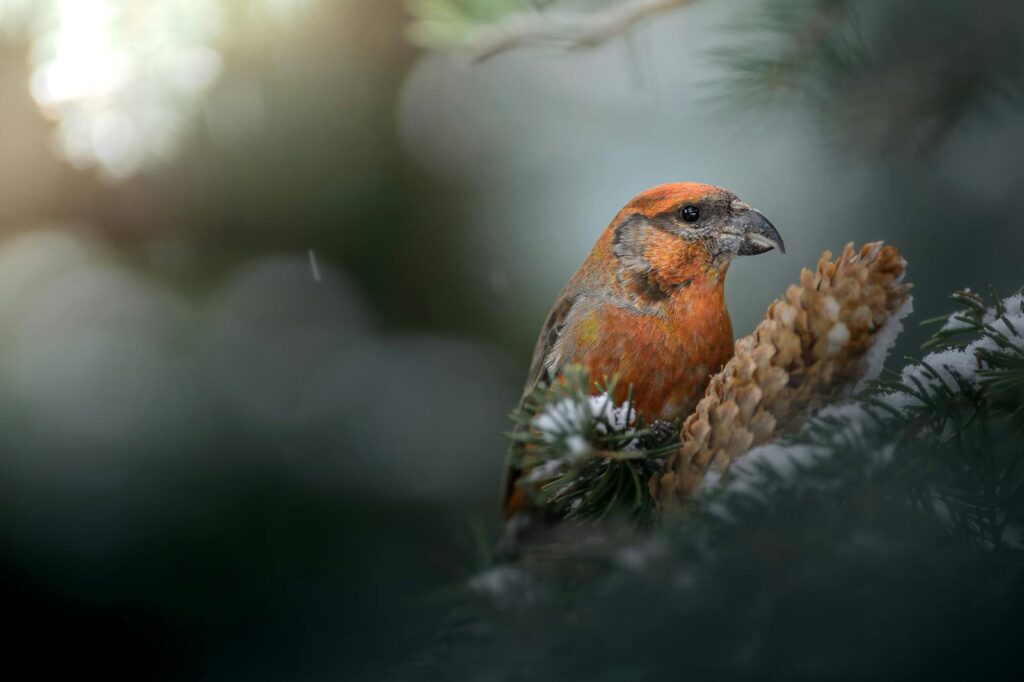
The Red Crossbill belongs to the finch family and is distributed across North America, Europe, and parts of Asia. What makes this medium-sized songbird truly remarkable is its specialized bill structure—the mandibles cross at the tips, forming a unique tool perfectly designed for extracting seeds from conifer cones. This distinctive adaptation allows the bird to access food sources that remain unavailable to most other species. However, the Red Crossbill’s relationship with weather extends far beyond mere physical adaptations. These birds have developed a sophisticated dietary response system that shifts according to precipitation, temperature changes, and seasonal patterns. Their feeding behavior represents one of nature’s most elegant examples of environmental responsiveness, allowing them to thrive across diverse habitats despite changing weather conditions.
The Specialized Crossbill Beak: An All-Weather Tool
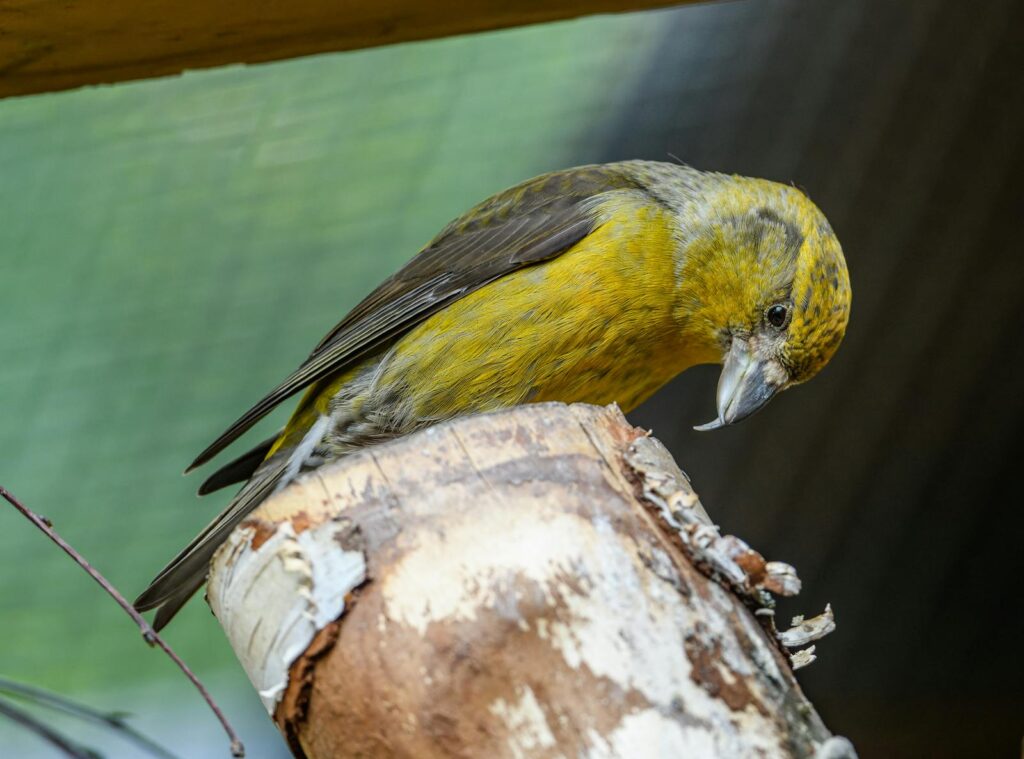
The Red Crossbill’s most distinctive feature—its crossed bill—serves as a specialized tool that allows for remarkable dietary flexibility. Unlike straight-billed birds that struggle to access tightly closed conifer cones, the crossbill’s asymmetrical mandibles function like a miniature crowbar, prying apart cone scales to reveal the nutritious seeds within. This adaptation isn’t static; research has documented subtle variations in bill size and crossing angle among populations that specialize in different conifer species. During wet weather, when cones absorb moisture and their scales loosen, crossbills can exploit this opportunity with less effort, targeting different tree species than they might in dry conditions. The bill’s design thus represents an evolutionary masterpiece that facilitates weather-responsive feeding strategies, allowing the bird to shift between different seed sources as environmental conditions change.
Conifer Cycles: The Weather-Food Connection
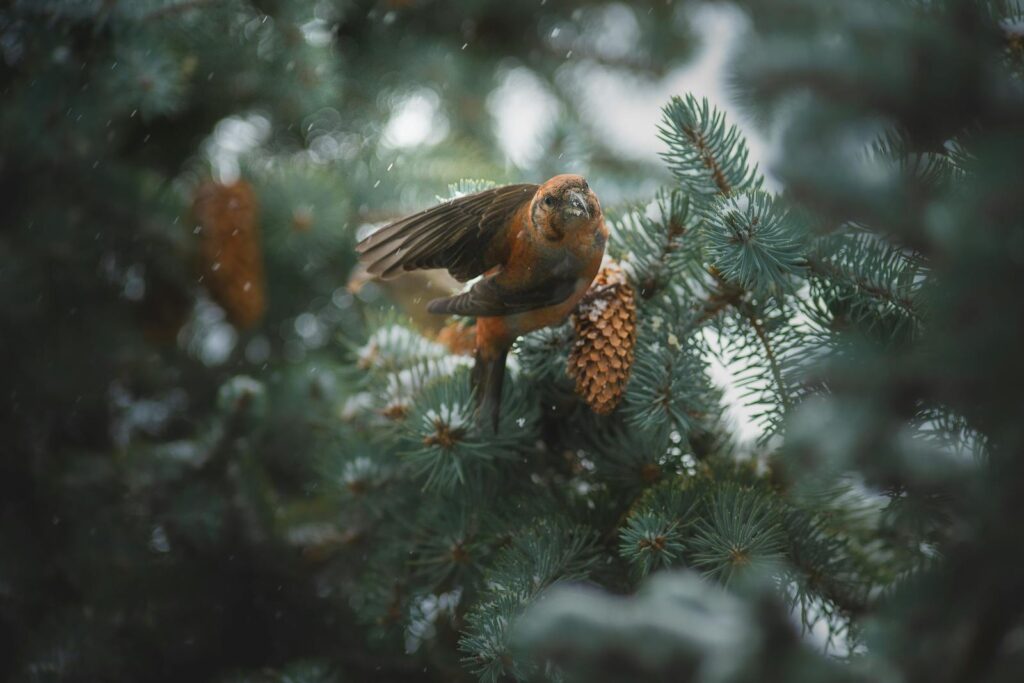
Central to understanding the Red Crossbill’s dietary shifts is the relationship between weather patterns and conifer cone production. Different conifer species produce cone crops in asynchronous cycles, with some trees yielding abundant seeds during certain years while others experience crop failures. These boom-and-bust cycles are directly influenced by weather conditions, including rainfall patterns, temperature fluctuations, and seasonal timing. During years of drought, certain pine species might produce minimal cone crops, while spruce or hemlock trees might thrive under the same conditions. Red Crossbills track these weather-influenced cone production patterns with remarkable precision, relocating across vast distances to find the most abundant food sources. This intricate relationship between weather, cone production cycles, and crossbill feeding behavior demonstrates a complex ecological dance that has evolved over millennia.
Winter Adaptations: Beyond Conifer Seeds
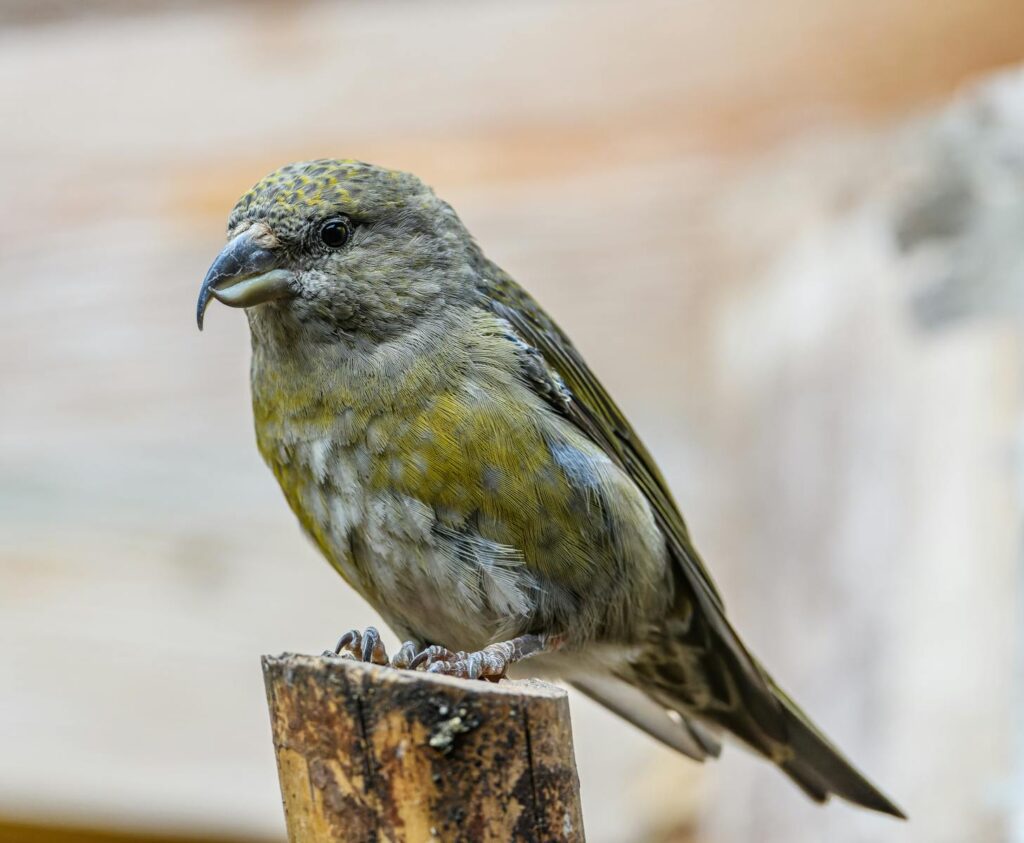
While conifer seeds constitute the Red Crossbill’s primary diet, severe winter weather can drive remarkable dietary diversification. During particularly harsh winter conditions when preferred cone sources become depleted or inaccessible due to heavy snow or ice, these adaptable birds shift to alternative food sources. They may feed on deciduous tree seeds, mountain ash berries, or even visit backyard feeders—behaviors rarely observed during milder conditions. Some populations have been documented extracting sap from maple trees during late winter thaws when the sugar content peaks. Perhaps most surprisingly, researchers have observed crossbills consuming mineral-rich soil or salt deposits during winter months, possibly to supplement their diet with necessary micronutrients that become scarce in their limited winter diet. These weather-driven dietary shifts highlight the species’ remarkable adaptability in the face of seasonal challenges.
Nomadic Movements: Following Food and Fleeing Weather
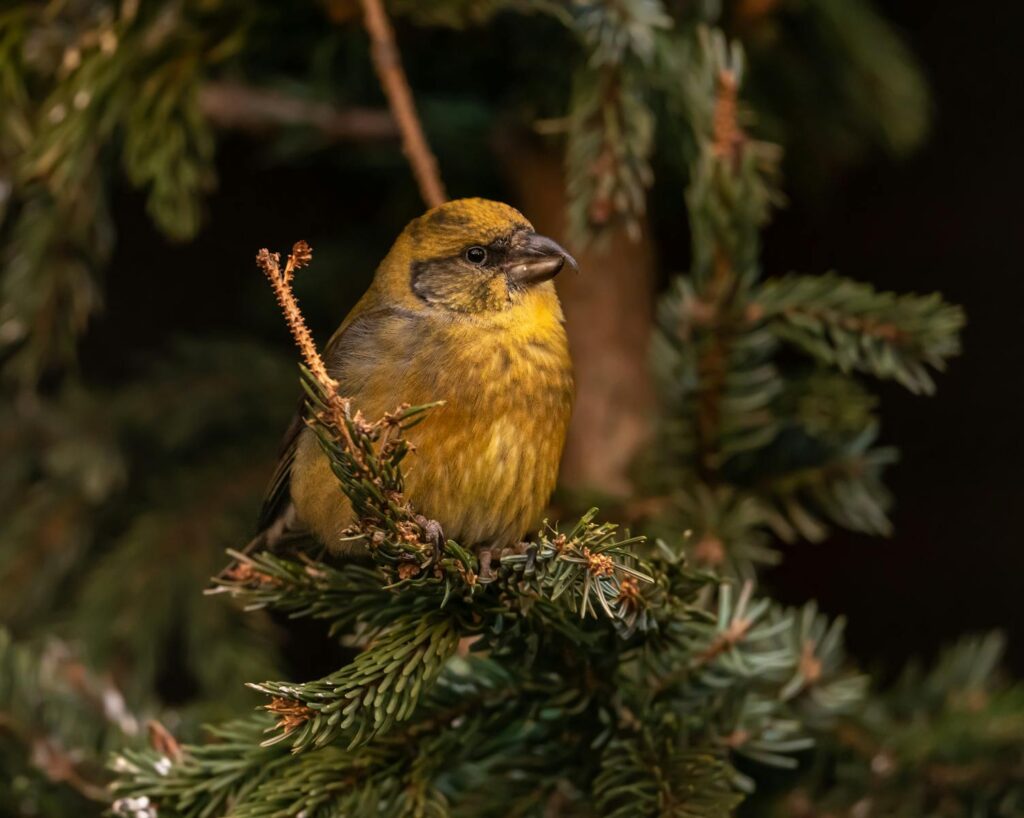
Unlike many bird species that follow predictable migratory routes, Red Crossbills exhibit nomadic movement patterns directly tied to weather conditions and subsequent food availability. These birds may travel hundreds or even thousands of miles in response to regional cone crop failures caused by drought, excessive rain, or temperature fluctuations. Their movements don’t follow cardinal directions like traditional migration but instead track cone abundance across landscapes, often resulting in irruptive population appearances in regions where they’re typically absent. Advanced tracking studies have revealed that crossbills can detect subtle weather-induced changes in cone production well before the physical evidence becomes apparent to human observers. This weather-responsive nomadism represents one of the bird world’s most sophisticated movement strategies, allowing crossbills to essentially “surf” waves of food abundance across vast geographic areas.
Breeding Synchronized with Weather-Dependent Food
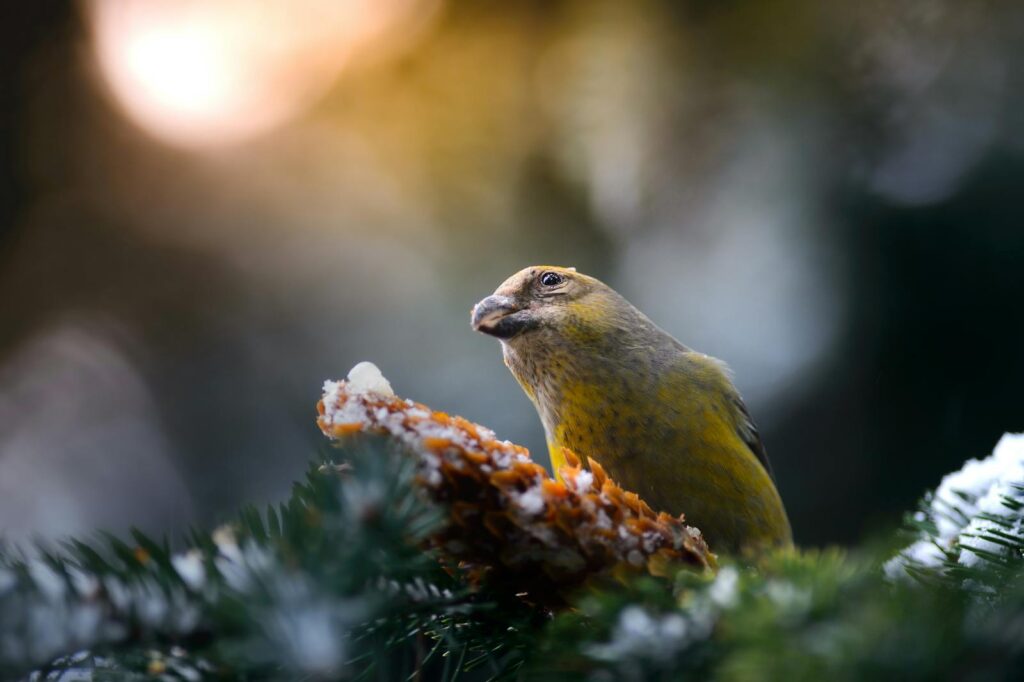
Perhaps the most extraordinary aspect of the Red Crossbill’s weather-responsive lifestyle is its unusual breeding pattern. Unlike most northern songbirds that breed during spring and summer, crossbills can breed during any month of the year—even mid-winter—provided sufficient food is available. This reproductive flexibility is directly tied to weather-influenced cone crop abundance. When weather conditions produce bumper cone crops in certain regions, crossbills respond by initiating breeding cycles, regardless of season or temperature. During particularly productive years following optimal weather conditions for cone development, females may produce multiple broods across different conifer habitats as they track food abundance. This weather-dependent breeding strategy demonstrates how deeply ingrained the relationship between climate patterns and crossbill life history has become through evolutionary time.
Regional Variations: Different Weather, Different Diets
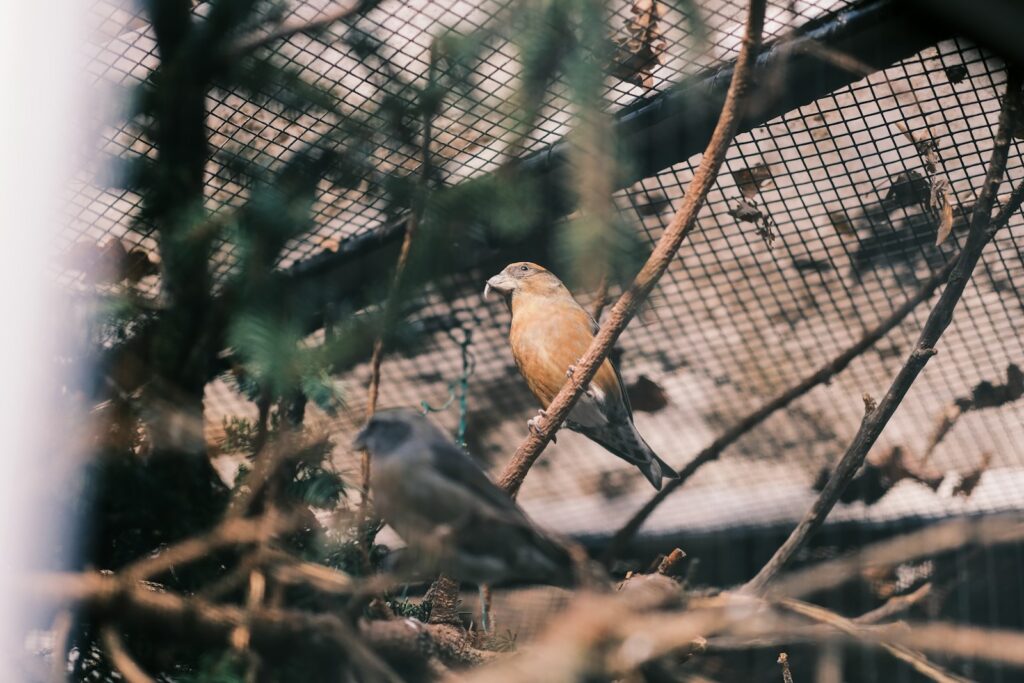
Red Crossbill populations across their extensive range have developed specialized feeding strategies adapted to local weather patterns and conifer species. Ornithologists have identified at least ten distinct “call types” in North America alone, each representing a population with subtle bill differences optimized for specific conifer species. Coastal populations facing persistent damp conditions have developed techniques for efficiently handling wet cones, while populations in arid mountain regions excel at extracting seeds from drought-stressed trees with tightly closed cones. In Europe, crossbills in the Scottish Highlands demonstrate different feeding techniques than their counterparts in Mediterranean pine forests, despite targeting related pine species. These regional adaptations illustrate how weather patterns have shaped crossbill feeding behavior at remarkably fine scales, potentially driving the early stages of speciation across their range.
Climate Change Impacts: Shifting Diets in a Warming World
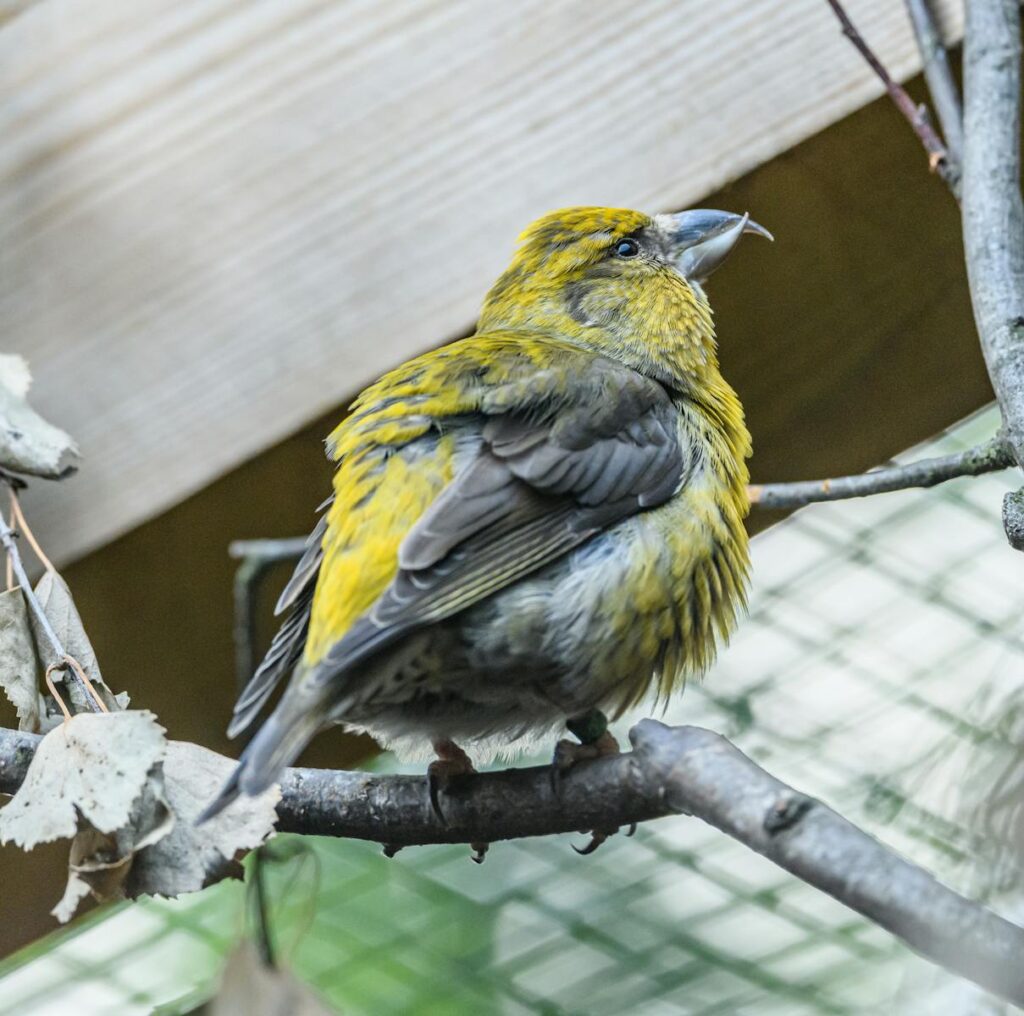
As climate change alters weather patterns across the Northern Hemisphere, Red Crossbills face unprecedented challenges to their weather-responsive feeding strategies. Warming temperatures have disrupted traditional conifer cone production cycles, creating mismatches between crossbill movements and food availability. Increased drought frequency in many conifer ecosystems has reduced cone production reliability, forcing crossbills to explore novel food sources and habitats. Recent research has documented crossbills consuming previously ignored seed types and even insects during periods when traditional food sources fail due to climate-altered weather patterns. These dietary shifts represent real-time evolutionary responses to changing climatic conditions, offering a window into how specialized species might adapt to our rapidly changing planet. However, scientists remain concerned that the pace of climate change may outstrip the crossbill’s capacity for dietary flexibility, potentially threatening populations specialized on particularly vulnerable conifer species.
Competing for Weather-Dependent Resources
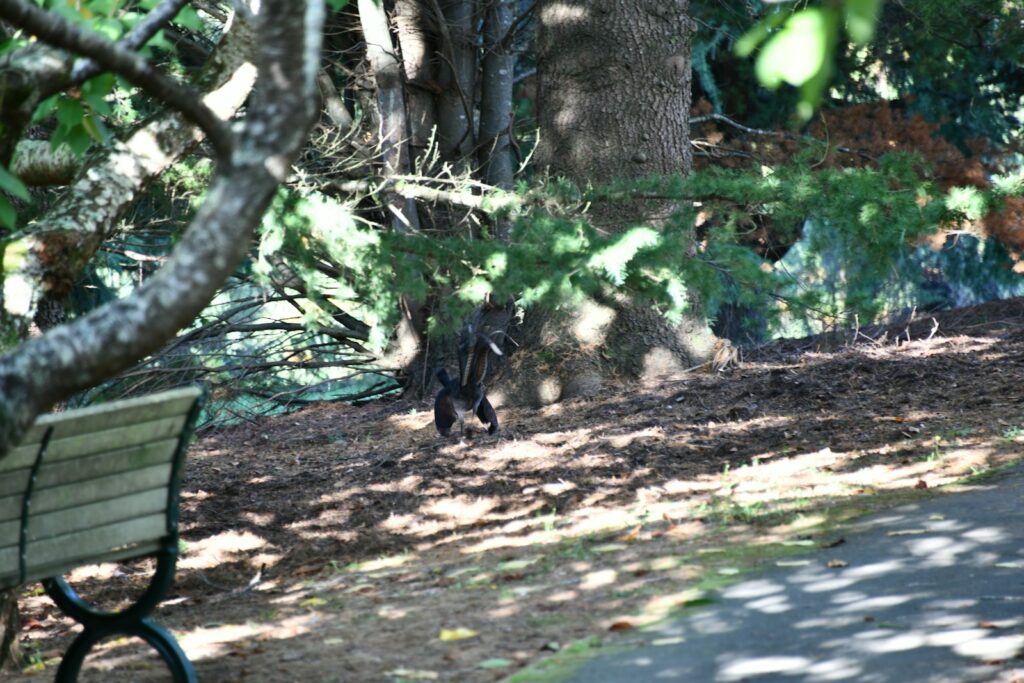
The Red Crossbill’s weather-responsive diet places it in complex competitive relationships with other seed-eating species. During years when favorable weather produces abundant cone crops, crossbills may share feeding grounds with species ranging from squirrels to other finches without significant resource depletion. However, when adverse weather conditions create cone crop failures, competition intensifies dramatically, forcing dietary shifts that may disadvantage crossbills compared to more generalist feeders. Interestingly, recent studies have documented behavioral changes during periods of weather-induced food scarcity, including increased territorial defense of productive feeding trees and altered flock structures to maximize foraging efficiency. Some populations have even developed synchronized feeding techniques where birds work cooperatively to exhaust cone resources in specific trees before moving as a unit to new feeding locations—behavior rarely observed during abundant food years.
Weather-Influenced Nutritional Adaptations
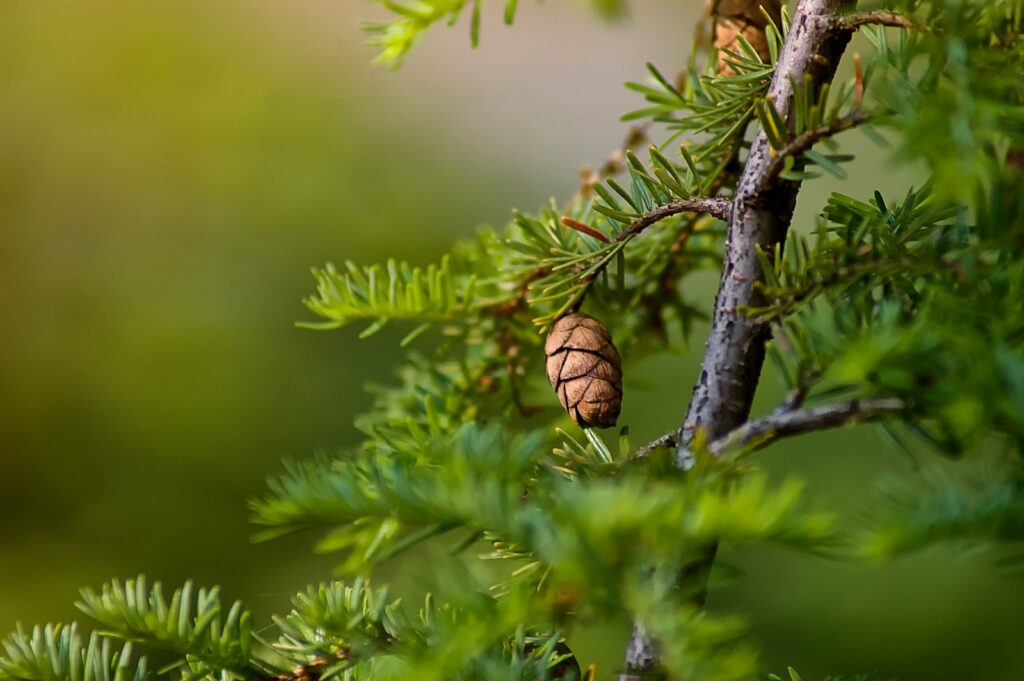
Beyond simple dietary shifts, Red Crossbills exhibit sophisticated nutritional adaptations to weather-influenced food availability. Their digestive physiology demonstrates remarkable plasticity, with digestive enzymes that adjust to different seed types as their diet changes throughout the year. During severe winter weather when energy demands peak, crossbills selectively target conifer species with the highest fat content, even if these cones require more handling time to process. Research has documented that crossbills can detect subtle nutritional differences between conifer species and even between cones on the same tree, allowing them to maximize energy intake as weather conditions change. Their liver metabolism adapts seasonally to process different plant compounds, allowing them to detoxify the varying chemical defenses present in different conifer seeds as they shift their diet in response to weather-influenced availability.
Weather Forecasting: How Crossbills Predict Dietary Shifts
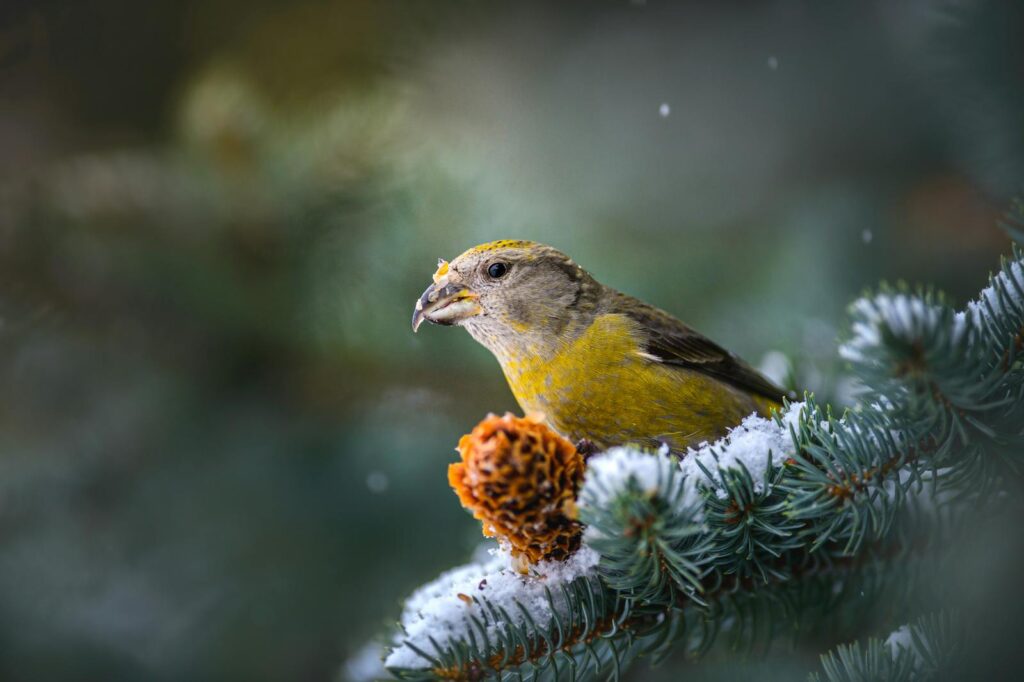
Emerging research suggests that Red Crossbills possess a remarkable ability to anticipate weather-related changes in food availability before they occur. Studies tracking crossbill movements have documented population shifts to new regions days before weather events that would impact cone accessibility, suggesting sensitivity to barometric pressure changes or other atmospheric cues. Their sensory abilities extend to detecting subtle changes in cone moisture content that precede cone opening triggered by weather conditions. This predictive capacity gives crossbills a competitive advantage over other seed-eating species that respond only after conditions have changed. Some researchers hypothesize that crossbills possess specialized receptors that detect plant hormonal changes preceding cone maturation—changes that occur in response to specific weather patterns and seasonal shifts. This weather forecasting ability represents one of the most sophisticated feeding adaptations in the bird world.
The Evolutionary Story: How Weather Shaped the Crossbill
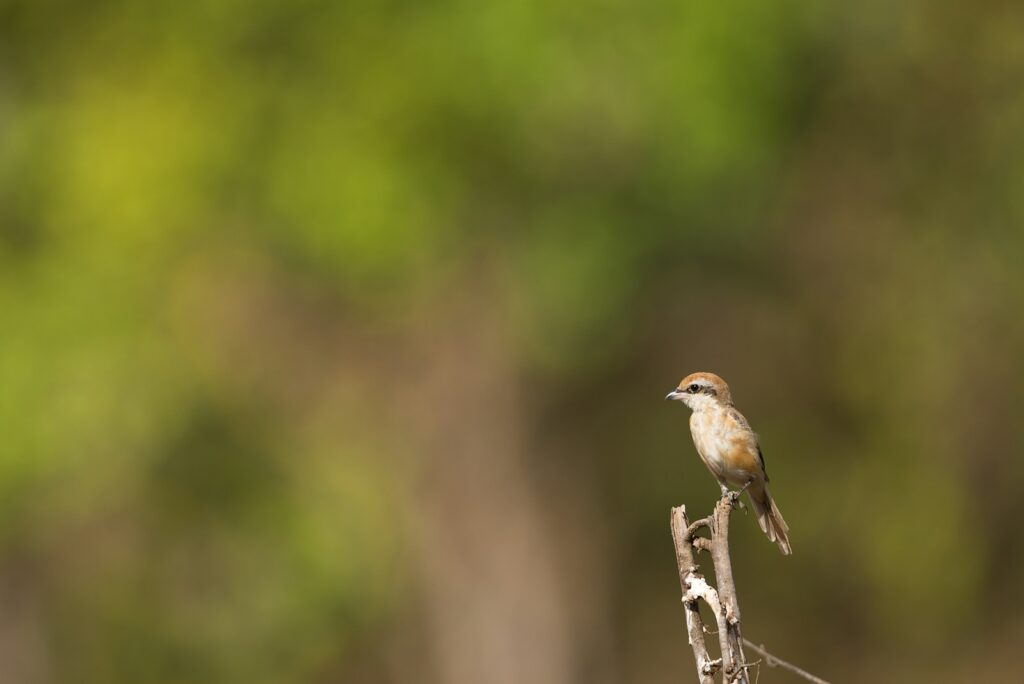
The Red Crossbill’s weather-responsive diet represents the culmination of millions of years of evolutionary history. Fossil evidence suggests that crossbill ancestors initially developed their distinctive bills during periods of climate fluctuation when adapting to variable food sources offered survival advantages. The diversification of modern crossbill types accelerated during periods of climate instability when weather-induced food unpredictability favored birds with greater dietary flexibility. Genetic studies reveal that populations specialized on different weather-influenced conifer cycles show significant genetic divergence, potentially representing an example of sympatric speciation—where new species emerge without geographic isolation. This evolutionary history continues to unfold today, as changing climate patterns create new selective pressures on crossbill populations across their range. The crossbill’s story illustrates how weather patterns have directly shaped avian evolution, creating one of nature’s most specialized yet adaptable feeding strategies.
Conservation Implications: Protecting Weather-Food Relationships
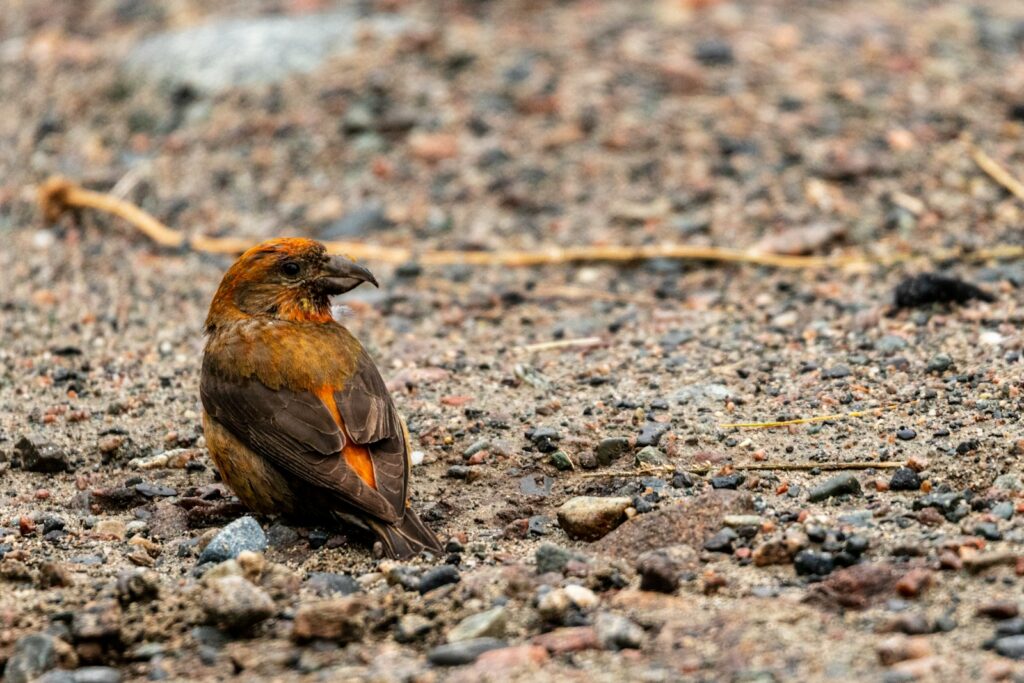
The Red Crossbill’s dependence on weather-influenced feeding patterns creates unique conservation challenges in our changing world. Traditional conservation approaches focused on protecting specific habitat patches may prove insufficient for these nomadic birds that track weather-dependent food resources across vast landscapes. Effective crossbill conservation requires maintaining diverse conifer ecosystems across regional scales, ensuring that when weather conditions cause cone crop failures in one area, alternative food sources remain available elsewhere. Climate change mitigation represents perhaps the most crucial conservation action for crossbills, as disrupted weather patterns threaten the predictable cone production cycles these birds have evolved to exploit. Conservation efforts increasingly focus on maintaining connectivity between conifer forests, allowing crossbills to continue their weather-responsive movements across increasingly fragmented landscapes. By understanding and protecting the complex relationship between weather patterns, conifer reproduction, and crossbill feeding ecology, conservationists hope to ensure these remarkable birds continue their aerial wanderings for generations to come.
The Red Crossbill’s remarkable ability to adapt its diet according to weather conditions exemplifies nature’s ingenuity in the face of environmental variability. From their specialized crossed bills to their nomadic movements and flexible breeding schedules, every aspect of these birds’ lives reflects an intricate relationship with weather-influenced food availability. As climate change alters weather patterns across the Northern Hemisphere, these adaptive birds may serve as important indicators of ecosystem health and resilience. Their weather-responsive feeding strategies not only ensure their own survival but also play vital ecological roles in conifer seed dispersal and forest regeneration. In studying how the Red Crossbill changes its diet with the weather, we gain insights into the complex ecological relationships that sustain our planet’s biodiversity—relationships increasingly under threat in our rapidly changing world.
